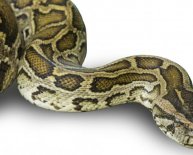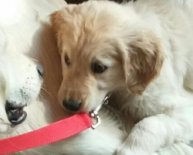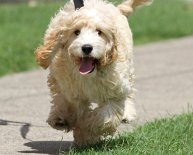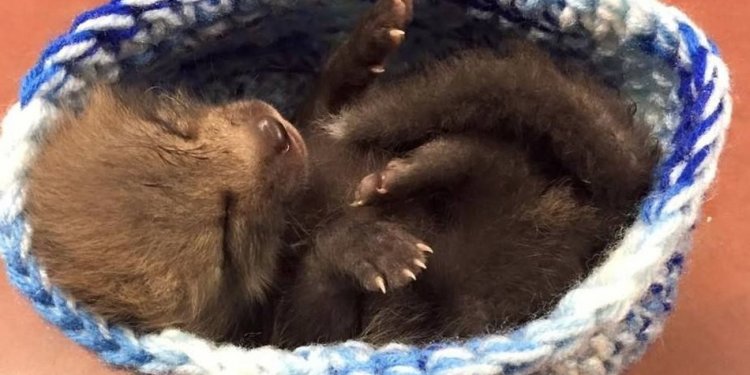
Rescued wild animals
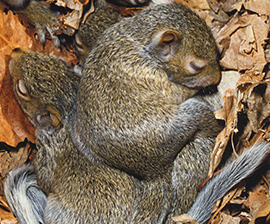 How to tell if baby animals are orphaned, injured, or perfectly fine—and what to do if they need your help
How to tell if baby animals are orphaned, injured, or perfectly fine—and what to do if they need your help
It's common to see baby wild animals outside during spring, as a new generation makes its way into the world. Baby wild animals might seem like they need our help, but unless the animal is truly orphaned or injured, there is no need to rescue them. These tips can help you decide whether to take action.
Signs that a wild animal needs your help
If you see any of these signs, find help for the animal. If necessary, safely capture and transport them to the appropriate place for treatment.
Tips for birds, rabbits, squirrels and other species
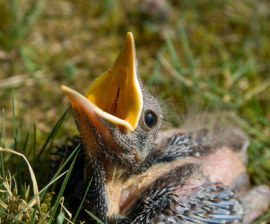 Determining whether an animal is orphaned and needs your help depends on age, species and behavior. Babies of some species are left alone all day and rely on camouflage for protection, while others are tightly supervised by their parent(s). Read on for descriptions of what’s normal for each species.
Determining whether an animal is orphaned and needs your help depends on age, species and behavior. Babies of some species are left alone all day and rely on camouflage for protection, while others are tightly supervised by their parent(s). Read on for descriptions of what’s normal for each species.
Baby birds
If baby birds are clearly injured or in imminent danger, contact a licensed wildlife rehabilitator. But if featherless or nearly featherless baby birds have fallen from their nest but appear unharmed, put them back in the nest if you can do so without danger to yourself. (It’s a myth that birds will abandon their young if a person touches them.)
Fully feathered birds: If the original nest was destroyed or is too high to reach, hang a small, shallow wicker basket close to where the original nest was. Woven stick baskets from garden stores or supermarket floral departments work well; they resemble natural nests and allow rain to pass through so the birds won’t drown. Adult birds won’t jump into anything they cannot see out of, so make sure the basket is not too deep. Put the fallen babies into the new nest and keep watch from a distance for an hour to make sure the parent birds return to the new nest to feed their chicks. Watch closely, because parent birds can be quite secretive. If they definitely do not return, contact a licensed wildlife rehabilitator.
Nearly or mostly featherless birds: These birds will become too cold in a makeshift nest, so you must place them in the original nest. If that's not possible, take them to a licensed wildlife rehabilitator. Remember that baby birds do best when raised by their parents or other birds, so try to reunite them with their parents before calling a rehabilitator.
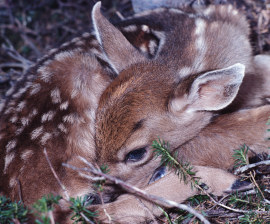 Fledglings: Birds with fully feathered bodies but short or non-existent tail feathers may be fledglings (adolescent birds who have left the nest). You might see them hopping on the ground, unable to fly. This is normal; birds learn to fly from the ground up! Fledglings might remain on the ground for a few days or even a week, supervised and fed by their parents a few times each hour before they get the hang of flying. You can tell if the fledglings are being fed by watching from a distance to see whether a parent bird flies over to them, usually a few times an hour. You can also look for white-grey feces near the fledgling. Birds defecate after being fed, so the presence of fecal material means that the birds are being cared for. Be sure to keep cats indoors and dogs leashed until the fledglings are old enough to fly. If you are positive that the parents aren’t returning to feed the babies, contact a licensed wildlife rehabilitator.
Fledglings: Birds with fully feathered bodies but short or non-existent tail feathers may be fledglings (adolescent birds who have left the nest). You might see them hopping on the ground, unable to fly. This is normal; birds learn to fly from the ground up! Fledglings might remain on the ground for a few days or even a week, supervised and fed by their parents a few times each hour before they get the hang of flying. You can tell if the fledglings are being fed by watching from a distance to see whether a parent bird flies over to them, usually a few times an hour. You can also look for white-grey feces near the fledgling. Birds defecate after being fed, so the presence of fecal material means that the birds are being cared for. Be sure to keep cats indoors and dogs leashed until the fledglings are old enough to fly. If you are positive that the parents aren’t returning to feed the babies, contact a licensed wildlife rehabilitator.
A rabbit who is 4 inches long, hops well and has open eyes and erect ears is independent from their mother and should be allowed to fend for themself. Uninjured baby rabbits in an intact nest should also be left alone. Although they might look abandoned because mom isn’t around, mother rabbits visit their dependent young only a few times a day to avoid attracting predators.
If the nest has been disturbed, lightly cover it with natural materials you find around the nest, like grass, fur or leaves, and follow these steps:
A squirrel who is nearly full-sized, has a full and fluffy tail and can run, jump and climb is independent. However, if a juvenile squirrel continuously approaches and follows people, them mom is probably gone. In this case, you should contact a rehabilitator because the baby is very hungry and needs care.
There are a few cases where you might need to intervene:
If the baby and/or their nest fell from the tree today, give the mother squirrel a chance to reclaim them young and relocate them to a new nest. If the baby is uninjured, leave them where they are, leave the area, keep people and pets away and monitor them from a safe distance.
If it’s chilly outside or the baby isn’t fully furred, place them in a shoebox with something warm underneath (like a heating pad on a low setting or a hot water bottle). Be sure to put a flannel shirt between the baby and the heating device, or they could overheat. Do not cover them with anything or the mother might not be able to find them.
If the babies are not retrieved by dusk, take these steps:

